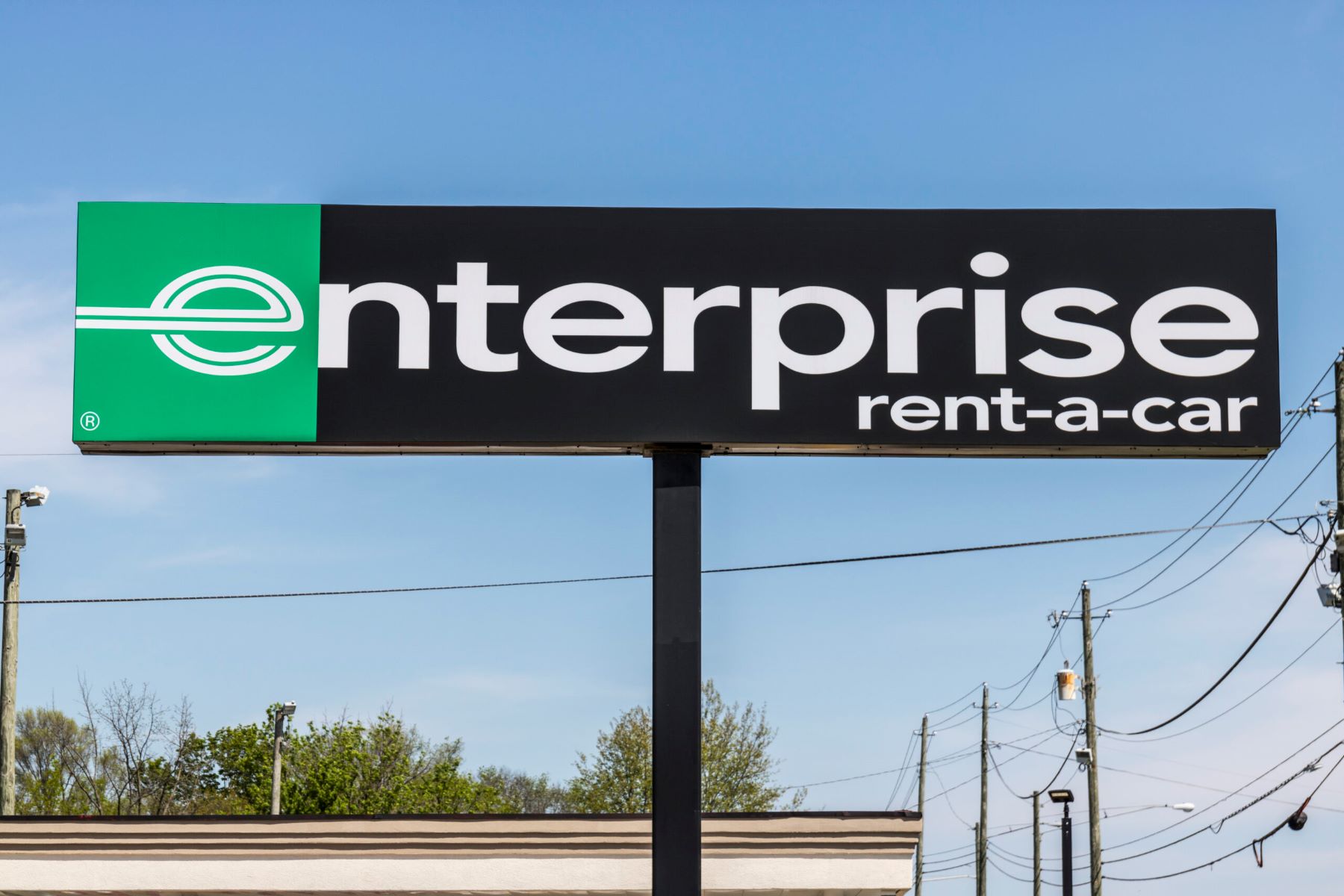

Finance
How Much Is Taxi Insurance
Published: November 22, 2023
Looking for taxi insurance? Find out how much it costs and save on your finance with our comprehensive coverage options and competitive rates.
(Many of the links in this article redirect to a specific reviewed product. Your purchase of these products through affiliate links helps to generate commission for LiveWell, at no extra cost. Learn more)
Table of Contents
Introduction
Taxi insurance is a critical component of running a successful taxi business. Whether you own a single cab or operate a fleet of taxis, having the right insurance coverage is essential to protect your vehicles, drivers, and passengers.
Unlike personal auto insurance, which covers private vehicles for personal use, taxi insurance provides specific coverage for commercial vehicles used for transporting fare-paying passengers. This specialized form of insurance takes into account the unique risks associated with operating taxis, such as frequent stops, high mileage, and potential liability issues.
In addition to legal requirements, taxi insurance is essential for safeguarding your business against unexpected expenses related to accidents, theft, vandalism, and other incidents that can occur on the road. Without adequate insurance coverage, you could be held personally liable for damages and face significant financial losses.
Understanding the various aspects of taxi insurance, including the factors that affect its cost, the types of coverage available, and how to navigate the process of obtaining and comparing quotes, is crucial for making informed decisions that protect your business.
In this article, we will explore the different factors that influence taxi insurance costs, the types of coverage available, and provide valuable tips for saving money on your insurance premiums. We will also discuss important concepts, such as taxi insurance excess and handling insurance claims, to help you navigate the complexities of taxi insurance with confidence.
By the end of this article, you will have a solid understanding of how taxi insurance works, empowering you to make informed choices that safeguard your business, drivers, and passengers.
Factors Affecting Taxi Insurance Costs
When it comes to calculating taxi insurance premiums, various factors come into play. Insurance providers take these factors into consideration to assess the level of risk associated with insuring a particular taxi or taxi fleet. Understanding these factors can help you better understand and manage your taxi insurance costs.
1. Location: The location where your taxi operates can greatly impact your insurance premiums. Areas with higher crime rates or high traffic congestion may be considered higher risk, leading to higher insurance costs.
2. Driver Age and Experience: The age and driving experience of your taxi drivers can influence insurance costs. Younger and less experienced drivers typically pose a higher risk, resulting in higher premiums.
3. Vehicle Type: The make, model, and age of your taxis will affect insurance costs. Newer or more luxury vehicles may be costlier to insure due to their higher value and potentially higher repair costs.
4. Vehicle Usage: The primary use of your taxi, such as commuting, private hire, or public hire, will impact insurance costs. Public hire taxis that can pick up passengers from the street may have higher premiums due to increased exposure to potential accidents and liability risks.
5. Mileage: The annual mileage of your taxis can influence insurance costs. Taxis that cover long distances are at a higher risk for accidents and may result in higher premiums.
6. Claims History: Your claims history, including past accidents or insurance claims, can affect your insurance costs. If you or your drivers have a history of accidents or claims, it may result in higher premiums.
7. Security Measures: The security features installed in your taxis, such as CCTV cameras, GPS tracking systems, and immobilizers, can potentially lower your insurance costs. These measures demonstrate your commitment to reducing risks and protecting your vehicles.
8. Driver Background Checks: Conducting thorough background checks on your drivers, including their driving records, criminal records, and employment history, can have a positive impact on your insurance premiums. Insurance providers view responsible and trustworthy drivers as lower risks.
9. No Claims Bonus: If you or your drivers have a no claims bonus, earned by not making any insurance claims, it can help reduce your insurance premiums. Insurance providers reward safe driving records.
10. Excess: The excess amount you choose for your policy can impact insurance costs. A higher excess means you’ll pay more out of pocket in the event of a claim, but it often results in lower premiums.
It’s important to remember that each insurance provider has its own unique criteria and weighting systems to determine premiums. Therefore, it’s crucial to compare quotes from multiple providers to find the best coverage at the most competitive price.
Types of Taxi Insurance Coverage
Taxi insurance offers different types of coverage to meet the specific needs of taxi businesses. Understanding these coverage options is crucial in selecting the right insurance policy that adequately protects your taxis and passengers. Here are some common types of taxi insurance coverage:
1. Third-Party Only (TPO): This is the minimum legal requirement for operating a taxi. TPO covers damages and injuries caused to third parties, including passengers, pedestrians, or other vehicles involved in an accident caused by your taxi. It does not cover damages to your own taxi.
2. Third-Party, Fire, and Theft (TPFT): TPFT coverage includes the same benefits as TPO but also provides protection against damage to your taxi caused by fire, theft, or attempted theft.
3. Comprehensive: Comprehensive coverage is the most extensive option and covers a wider range of scenarios. It includes all the benefits of TPFT and provides coverage for damage to your own taxi, even if you are at fault in an accident. This coverage also extends to cover expenses related to medical treatment for drivers and passengers.
4. Public Liability Insurance: Public liability insurance covers legal costs and compensation for injury or damage claims made by members of the public against your taxi business. It offers protection against incidents that occur outside of your taxi, such as slip and fall accidents or other personal injury claims.
5. Personal Accident Cover: Personal accident cover provides compensation to you, the taxi driver, or your passengers in the event of injury or death resulting from an accident while using the taxi. This coverage offers financial support and peace of mind for you and your passengers.
6. Legal Expenses Insurance: Legal expenses insurance covers the cost of legal representation for legal disputes, such as defending against an unfair dismissal claim or pursuing compensation for non-fault accidents. It ensures you have the necessary support to handle legal matters relating to your taxi business.
It’s important to carefully assess your specific requirements and risk exposure to determine which type(s) of coverage are necessary for your taxi business. Additionally, bear in mind that insurance providers may offer additional optional coverage that can be added to your policy to further tailor your coverage to your needs.
Consulting with an experienced insurance broker who specializes in taxi insurance can also help you navigate the process and ensure you have the appropriate coverage for your unique circumstances.
Obtaining Taxi Insurance Quotes
Obtaining taxi insurance quotes is an essential step in finding the right coverage for your taxi business. Here are some steps to help you navigate the process and obtain competitive quotes:
1. Research Insurance Providers: Start by researching reputable insurance providers that specialize in taxi insurance. Look for companies with a strong track record, positive customer reviews, and a good reputation within the industry.
2. Provide Accurate Information: To receive accurate quotes, provide detailed and accurate information about your taxi business and drivers. This includes information about your vehicles, the number of drivers, their driving history, and any additional security measures you have in place.
3. Identify Your Coverage Needs: Determine the specific coverage needs of your taxi business. Understand the legal requirements and consider additional coverage options that best protect your vehicles, drivers, and passengers.
4. Request Quotes: Contact the insurance providers you have identified and request quotes. Provide them with the necessary information to assess your risk and calculate premiums. It’s advisable to obtain quotes from multiple providers to compare coverage options and pricing.
5. Review the Quotes: Carefully review the quotes you receive, ensuring they meet your coverage needs and budget. Pay attention to the coverage limits, policy exclusions, excess amounts, and any additional benefits offered.
6. Seek Professional Advice: If you’re unsure about any aspect of the quotes or require clarification, seek advice from an insurance broker who specializes in taxi insurance. They can assist you in understanding the terms and conditions of the policies and help you make an informed decision.
7. Consider the Reputation of the Insurer: When selecting an insurance provider, consider their reputation for customer service and claims handling. Look for insurers with a quick and efficient claims process to ensure smooth handling in case you need to make a claim.
8. Price Isn’t Everything: While price is a significant factor when choosing an insurance policy, it’s essential to also consider the coverage provided. A policy with a lower premium may have limited coverage or higher excess amounts, which could prove costly in the long run.
9. Evaluate Policy Exclusions: Pay close attention to the policy exclusions to understand what is specifically excluded from coverage. Some common exclusions include wear and tear, intentional damage, and acts of terrorism.
10. Make an Informed Decision: After careful consideration of the quotes, policy terms, and the reputation of the insurance provider, make an informed decision about which policy offers the best coverage and value for your taxi business.
Remember, obtaining taxi insurance quotes can be a time-consuming process, but it’s essential to invest time and effort in finding the right coverage that adequately protects your business. Review your insurance needs regularly to ensure the coverage remains sufficient as your business grows and circumstances change.
Comparing Taxi Insurance Providers
When it comes to choosing a taxi insurance provider, it’s important to compare your options to ensure you get the best coverage at the most competitive price. Here are some factors to consider when comparing taxi insurance providers:
1. Reputation and Financial Stability: Research the reputation and financial stability of each insurance provider. Look for companies with a strong track record, positive customer reviews, and a good reputation for handling claims efficiently.
2. Coverage Options: Review the coverage options offered by each insurer. Ensure they provide the specific coverage you need for your taxi business, including desired add-ons or optional coverage.
3. Policy Exclusions and Limitations: Understand the policy exclusions and limitations of each provider. Pay attention to any restrictions or conditions that may affect your coverage, such as mileage limits or geographical restrictions.
4. Premiums and Excess: Compare the premiums and excess amounts offered by different insurers. Consider the overall price, including any upfront costs and ongoing monthly payments, and how the excess amount affects your out-of-pocket expenses in the event of a claim.
5. Claims Process: Review the claims process of each insurance provider. Look for companies with a simple and efficient claims procedure, including a dedicated claims helpline, online claims submission, and quick processing times.
6. Additional Benefits and Services: Consider any additional benefits or services offered by the insurance providers. These may include 24/7 customer support, breakdown assistance, legal services, or access to a network of approved repairers.
7. Customer Support: Evaluate the level of customer support provided by the insurance providers. Look for companies with responsive and knowledgeable customer service representatives who are readily available to answer your questions or assist with any concerns.
8. Discounts and No Claims Bonus: Inquire about any available discounts or no claims bonus programs that can help reduce your insurance premiums. Some insurers offer incentives for safe driving records or loyalty discounts for long-term customers.
9. Ease of Policy Management: Consider the ease of managing your policy with each provider. Look for insurers that offer online account access, allowing you to make changes to your policy, view documents, and make payments conveniently.
10. Personal Recommendations: Seek recommendations from other taxi business owners or industry professionals. Their firsthand experiences can provide valuable insights and help you make an informed decision.
By carefully evaluating these factors and comparing taxi insurance providers, you can select the one that best suits your needs, offers the desired level of coverage, and provides excellent customer service. Remember to regularly review your insurance policy to ensure it continues to meet your changing business requirements and to stay updated with any emerging insurance providers or policies in the market.
Tips for Saving Money on Taxi Insurance
Managing the cost of taxi insurance is crucial for the financial health of your taxi business. Here are some tips to help you save money on your taxi insurance premiums:
1. Shop Around and Compare Quotes: Obtain quotes from multiple insurance providers and compare coverage options and premiums. This allows you to choose the most competitive offer that meets your specific needs.
2. Consider a Higher Excess: Opting for a higher excess amount in your insurance policy can lower your premiums. However, ensure the excess amount remains affordable in the event of a claim.
3. Install Security Measures: Enhancing the security of your taxis by installing GPS tracking devices, alarms, immobilizers, and CCTV cameras can help reduce insurance costs. Insurance providers often reward additional security measures that minimize the risk of theft or damage.
4. Hire Experienced Drivers: Employing experienced and responsible drivers with clean driving records can help lower insurance premiums. Insurance providers view experienced drivers as less likely to be involved in accidents.
5. Set Driver Age Restrictions: Setting age restrictions for your drivers can have an impact on insurance premiums. Insurance providers may offer lower rates for drivers above a certain age threshold, as they are generally considered more responsible and experienced on the road.
6. Consider Black Box Insurance: Black box insurance uses telematics technology to monitor driving behavior, such as speed, acceleration, and braking. Insurance providers may offer discounts for using this technology, especially if it demonstrates safe driving habits.
7. Pay Annually: If financially feasible, consider paying your taxi insurance premium annually instead of monthly. Insurance providers often offer discounts for upfront payments.
8. Utilize No Claims Bonus: Accumulating a no claims bonus by avoiding insurance claims can help lower your premiums. Insurance providers reward safe driving records by offering discounts for each claim-free year.
9. Review Your Coverage Regularly: Regularly assess your coverage needs and adjust your policy accordingly. If your circumstances change, such as reducing the number of taxis or changing the primary use of your vehicles, inform your insurance provider to ensure you have the appropriate coverage and avoid paying for unnecessary protection.
10. Seek Professional Advice: Consult with an experienced insurance broker who specializes in taxi insurance. They can provide guidance tailored to your specific situation and help you find cost-effective solutions.
Remember, while it is important to save on insurance costs, it’s equally vital not to compromise on adequate coverage. Ensuring you have the right level of protection for your taxis, drivers, and passengers should remain a priority while seeking ways to reduce your insurance premiums.
Understanding Taxi Insurance Excess
When it comes to taxi insurance, understanding the concept of excess is important. Excess is the amount you agree to contribute towards the cost of a claim before your insurance coverage kicks in. It serves as a form of self-insurance and helps to lower insurance premiums. Here’s what you need to know about taxi insurance excess:
1. Voluntary Excess: Most taxi insurance policies have a voluntary excess that you can choose. This is the amount you agree to pay towards a claim on top of any compulsory excess set by the insurance provider. Opting for a higher voluntary excess can help lower your insurance premiums.
2. Compulsory Excess: In addition to the voluntary excess, insurance providers set a compulsory excess amount for each policy. This is the minimum amount you must pay towards a claim before your insurance covers the rest. The compulsory excess is determined by the insurance provider and is typically non-negotiable.
3. How Excess Works: If you make a claim, you will need to pay the excess amount agreed upon when you purchased the policy. For instance, if your policy has a voluntary excess of $500 and a compulsory excess of $250, you would have to pay a total excess of $750 towards the claim. The insurance provider will cover the remaining costs, up to the policy’s coverage limits.
4. Impact on Premiums: The excess amount you choose can have an impact on your insurance premiums. Opting for a higher excess can result in lower premiums as it indicates that you are willing to take on a larger portion of the risk in the event of a claim.
5. Balancing Excess and Affordability: When considering the excess amount, it’s important to strike a balance between affordability and the level of risk you are comfortable with. While a higher excess can save you money on premiums, it’s crucial to ensure that the excess amount remains affordable in the event of a claim.
6. Assessing Risk: Consider the specific risks associated with your taxi business when determining the appropriate excess amount. Evaluate factors such as driver experience, location, and the value of your taxis. Higher-risk factors may warrant a lower excess to mitigate potential financial strain in the event of a claim.
7. Excess and No Claims Bonus: Making a claim may impact your no claims bonus. If you have accumulated a considerable no claims bonus, it’s important to consider how a claim and payment of excess could affect it. It’s essential to review your policy and discuss this with your insurance provider.
8. Excess Waiver: Some insurance providers offer an excess waiver option for an additional cost. This can be beneficial if you want to avoid paying any excess in the event of a claim. However, it’s important to carefully evaluate the cost of the waiver versus the potential savings it may provide.
Understanding how taxi insurance excess works can help you make informed decisions when choosing your policy. Carefully consider your specific circumstances, budget, and risk tolerance to determine the most appropriate excess amount for your taxi business.
Dealing with Taxi Insurance Claims
Dealing with taxi insurance claims can be a stressful and challenging process, but understanding the steps involved can help you navigate the situation effectively. Here are some key things to keep in mind when handling taxi insurance claims:
1. Prompt Reporting: It’s crucial to report any incidents or accidents to your insurance provider as soon as possible. Most policies have a specific timeframe within which claims must be reported. Failing to report a claim promptly may result in a denial of coverage.
2. Gather Information: Collect all relevant information at the scene of the incident, including details of the parties involved, witnesses, and any damage sustained. Take photos and notes to support your claim and provide accurate information when reporting to your insurance provider.
3. Provide Accurate Details: Be thorough and precise when providing information on the claim form. Ensure you accurately document the cause of the incident, the extent of damage or injuries, and any other pertinent information requested by the insurer.
4. Consult with an Insurance Claims Handler: If you find the claims process overwhelming or require assistance, consider consulting with an insurance claims handler. These professionals can guide you through the process, ensure you provide the required documentation, and advocate for your best interests.
5. Cooperate with Investigations: Insurance providers may initiate investigations to assess the validity of a claim. It’s important to cooperate fully and provide any requested documents or information promptly. Failure to cooperate may jeopardize your claim.
6. Keep Detailed Records: Maintain accurate records of all communications, including emails, phone calls, and paperwork exchanged with your insurance provider. This documentation can be invaluable in case of any disputes or discrepancies during the claims process.
7. Follow the Claims Process: Familiarize yourself with the specific claims process outlined by your insurance provider. Adhere to the required steps, such as completing claim forms, providing supporting documents, and attending any necessary appointments or assessments.
8. Communication Channels: Stay in regular contact with your insurer to receive updates on the progress of your claim. Notify them promptly of any changes in circumstances or additional information that may impact the claim.
9. Seek Legal Advice, if Needed: If your claim is complex or involves legal aspects, it may be beneficial to seek legal advice. A lawyer experienced in insurance claims can provide guidance and ensure your rights are protected throughout the process.
10. Patience and Resilience: Dealing with insurance claims can often be a lengthy process. Stay patient and resilient, understanding that it may take time to resolve your claim and receive the appropriate settlement.
Remember, each insurance policy and claim is unique, so it’s important to carefully review your policy documents and consult with your insurance provider for specific guidance tailored to your situation. By staying organized, providing accurate information, and seeking the necessary support, you can navigate the claims process with greater ease and maximize the chances of a successful outcome.
Conclusion
Taxi insurance is a critical aspect of running a successful taxi business. It provides essential protection for your vehicles, drivers, and passengers, mitigates financial risks, and ensures compliance with legal requirements. Understanding the factors that affect insurance costs, the various types of coverage available, and how to obtain and compare insurance quotes is crucial for making informed decisions and securing the best insurance policy for your taxi business.
By considering factors such as location, driver age and experience, vehicle type, and mileage, you can better understand how insurance providers calculate premiums. Exploring the different types of coverage, including third-party, comprehensive, and additional coverage options such as public liability insurance and personal accident cover, allows you to tailor your insurance policy to your specific needs.
Obtaining taxi insurance quotes from multiple providers and comparing coverage options, premiums, and additional benefits can help you find the most competitive offer. Consider factors such as reputation, financial stability, claims process, and customer support when evaluating insurance providers.
To save money on taxi insurance, consider measures such as installing security devices, hiring experienced drivers, setting higher excess levels, and utilizing no claims bonuses. Regularly reviewing your coverage, seeking professional advice, and ensuring you understand the concept of excess can further help manage costs and minimize financial risks.
When handling taxi insurance claims, prompt reporting, accurate details, cooperation with your insurer, and maintaining detailed records are essential. Consider consulting with an insurance claims handler or seeking legal advice when needed to navigate the claims process effectively.
In conclusion, taxi insurance is a vital investment for any taxi business. By understanding the factors that influence insurance costs, exploring different coverage options, and employing cost-saving strategies, you can ensure your business is adequately protected while managing insurance expenses. By following the necessary steps when obtaining insurance quotes and handling claims, you can navigate the process with confidence, safeguarding your taxis, drivers, and passengers.














